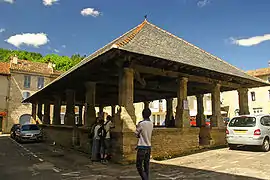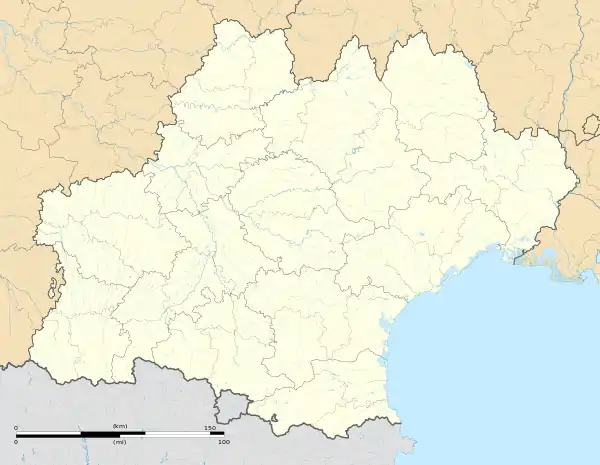Caylus | |
|---|---|
 Caylus village square | |
 Coat of arms | |
Location of Caylus | |
 Caylus  Caylus | |
| Coordinates: 44°14′12″N 1°46′18″E / 44.2367°N 1.7717°E | |
| Country | France |
| Region | Occitania |
| Department | Tarn-et-Garonne |
| Arrondissement | Montauban |
| Canton | Quercy-Rouergue |
| Intercommunality | CC du Quercy Rouergue et des Gorges de l'Aveyron |
| Government | |
| • Mayor (2020–2026) | Vincent Cousi[1] |
| Area 1 | 96.79 km2 (37.37 sq mi) |
| Population | 1,470 |
| • Density | 15/km2 (39/sq mi) |
| Time zone | UTC+01:00 (CET) |
| • Summer (DST) | UTC+02:00 (CEST) |
| INSEE/Postal code | 82038 /82160 |
| Elevation | 170–385 m (558–1,263 ft) (avg. 235 m or 771 ft) |
| 1 French Land Register data, which excludes lakes, ponds, glaciers > 1 km2 (0.386 sq mi or 247 acres) and river estuaries. | |
Caylus (French pronunciation: [kajlys]; Languedocien: Cailutz) is a commune in the Tarn-et-Garonne department in the Occitanie region in southern France. Its inhabitants are called Caylusiens and Caylusiennes.
City
Caylus is famous for a castle built before 1176, and was owned by Raymond V of Toulouse at the time. It was taken by Simon de Montfort in 1211, before moving into the royal domain in 1270. In 1562, the city was sacked by the troops Calvinists of Symphorien Durfort, lord of Duras. In 1622, Louis XIII established headquarters here during the siege of Saint-Antonin.
Évariste Régis Huc, C.M. (1813–1860), a French Catholic priest, Lazarite missionary, and traveller was born in Caylus.[3]
See also
References
- ↑ "Répertoire national des élus: les maires" (in French). data.gouv.fr, Plateforme ouverte des données publiques françaises. 13 September 2022.
- ↑ "Populations légales 2021". The National Institute of Statistics and Economic Studies. 28 December 2023.
- ↑ . Encyclopædia Britannica. Vol. XII (9th ed.). 1881. pp. 328–329.
Wikimedia Commons has media related to Caylus.
This article is issued from Wikipedia. The text is licensed under Creative Commons - Attribution - Sharealike. Additional terms may apply for the media files.